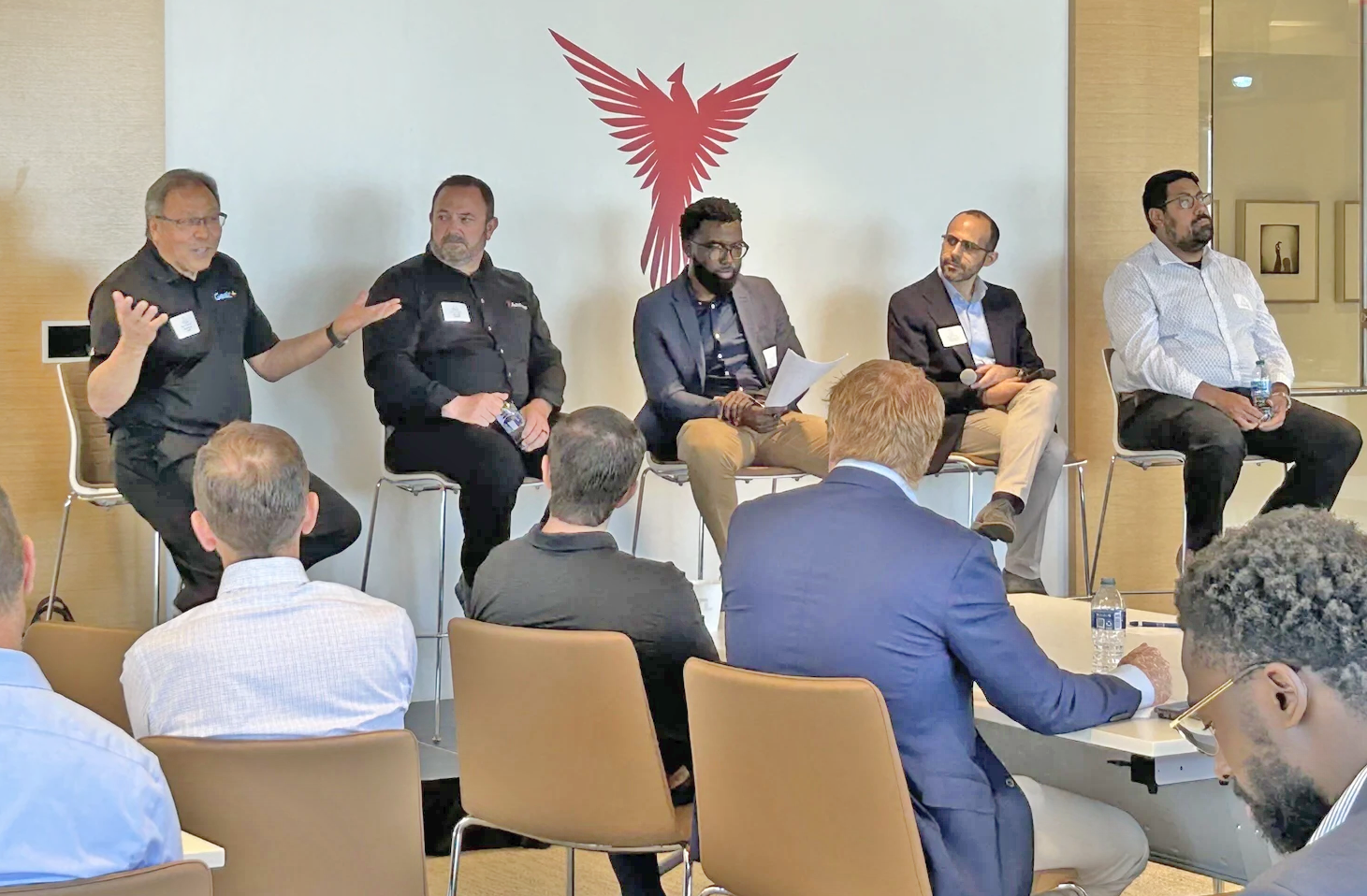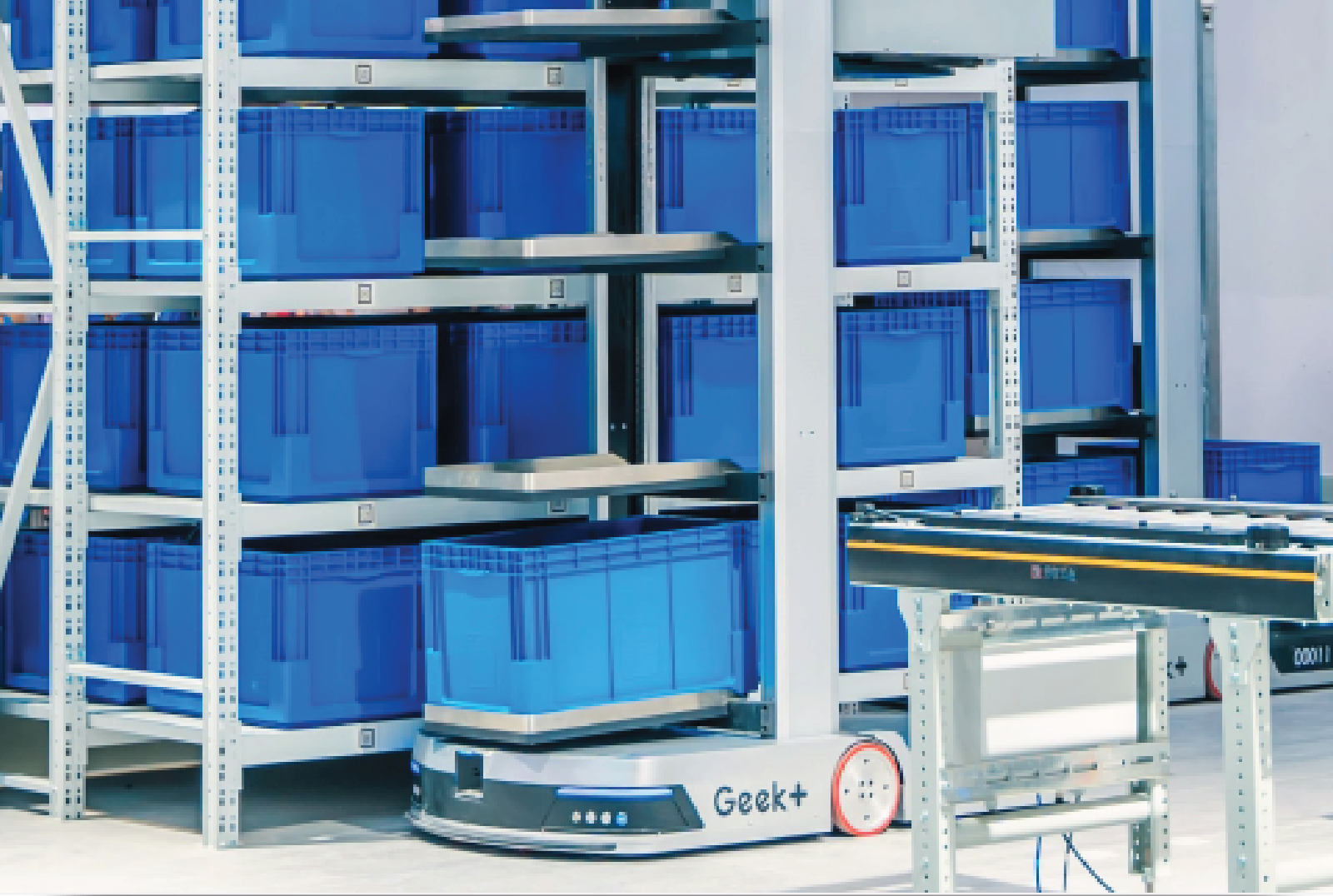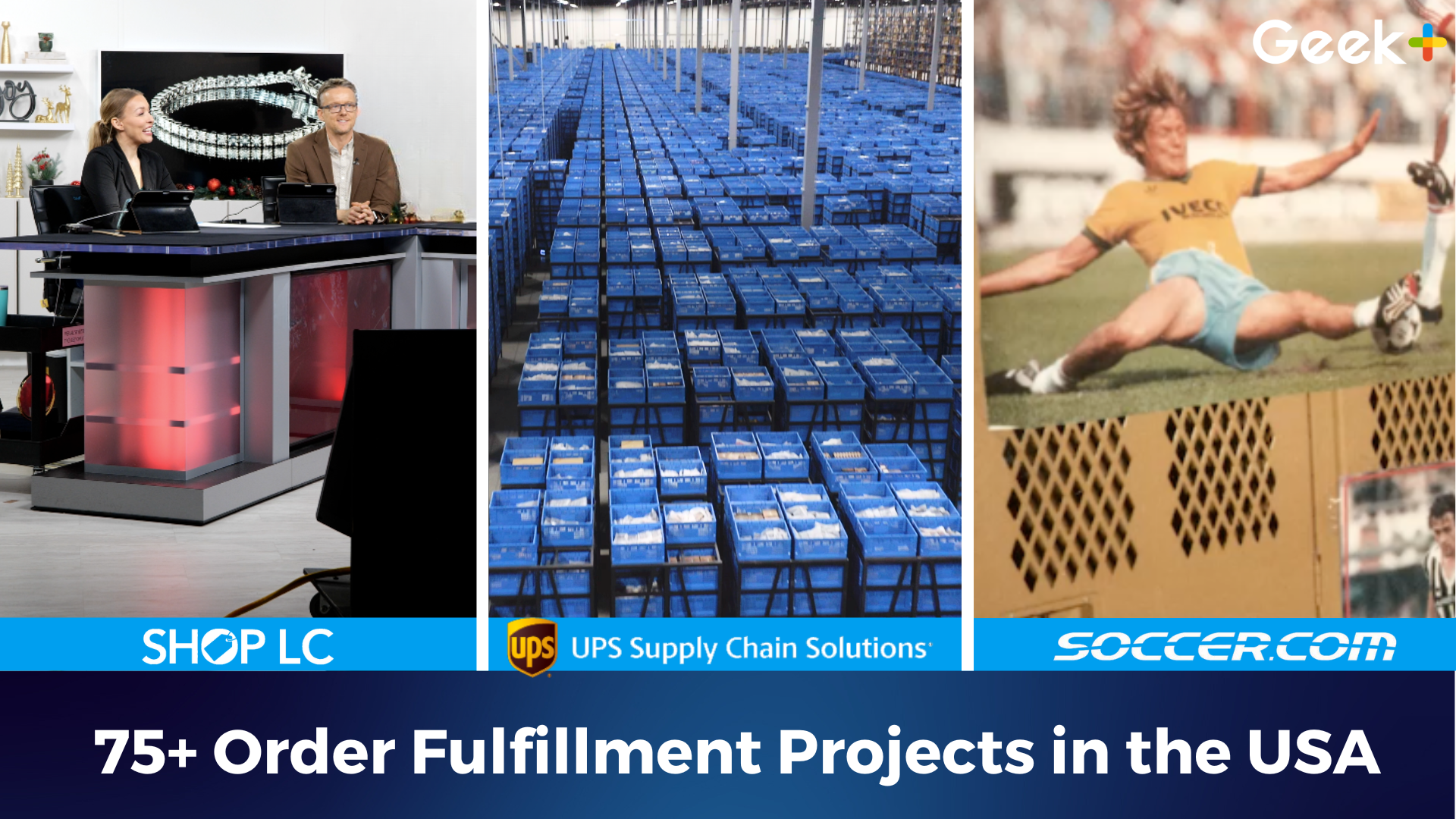Gianmichele Alivia, vice president of distribution at EssilorLuxottica, turned to warehouse automation to solve an output challenge. He said that’s the number one reason businesses turn to mobile robotics and automation for order fulfillment.
Companies also turn to automation for efficiencies – to solve for, among other issues, a lack of labor – and to reduce errors and increase customer satisfaction.
“Especially in repetitive jobs, people are going to make mistakes,” Alivia said. “And when you have very high expectations from your customer base, the use of equipment that can do high speed, repetitive activities has been really important.”
Alivia discussed EssilorLuxxotica’s automation journey during Automation: The Future is Now, a conversation put on by the CSCMP Atlanta Roundtable at the Metro Atlanta Chamber. Panelists included Alivia; Beshoy Morkos, an associate professor in the College of Engineering at the University of Georgia; and Rick DeFiesta, executive vice president of sales and solutions at Geekplus. The group discussed reasons for automating warehouse and order fulfillment operations, strategies for success, and potential pitfalls and challenges.

The ROI of warehouse automation
Automating manual order fulfillment processes can be a necessity for today's warehouse operators, but it can also be a significant investment. In his experience, though, DeFiesta has found that companies are no longer weighing projects costs against traditional return-on-investment metrics.
“There is no ROI. It’s about staying in business,” DeFiesta said. “In today’s world, where it’s a lot of ecom, how do you measure loss of business, abandoned shopping carts, never having that customer again because they went somewhere else?"
DeFiesta drove home this point by telling the audience about a group of CEOs from retailers both large and small. The CEOs of large companies were asking representatives from the smaller corporations how they justify making a long-term investment in automation. Their response? Survival. It's not about the cost of warehouse automation as much as it's about the cost of not automating in the face of increasing customer demands, a lack of labor and the continued crush of e-commerce orders.
Academia is following the trend toward automation as well, making sure students are familiar with the latest technologies before they even leave campus. Morkos said his job is to get students to see technology as more than a black box and to instead truly understand the meaning behind the software. He tells his students to not take what it gives you and move along; think instead, "What does this mean? What assumptions is it making? What are the implications of it?" he said.
The university isn't made up of students that are too quick to accept everything new technology presents, of course.
“We’re also seeing on the other side of the pendulum, students that are saying, 'I don’t really trust it,'” he said.
For both types of students, Morkos has a simple message designed to inspire both the early adopters and the technologically wary:
“Your career is going to be collaborative beside technology."
What does that mean? Embrace automation because it helps everyone work smarter.
Automation training can be challenging
Alivia told the audience that training employees on new technology can turn into a major challenge. When turnover is added into that the equation, training can become a full-time job
“My boss jokes all the time that we’re actually a training company -- that is one of the big struggles we’ve had," he said.
Goods-to-Person order fulfillment robots create a more efficient, error-free environment for pickers, it's true, but retailers also like Geekplus robots because training can be accomplished quickly. This helps reduce time spent showing workers how to fulfill orders, but also reduces the burnout rate for employees and makes the job a more pleasant experience. What about employees who are not native English speakers? Geekplus software is highly graphics based, allowing employees to easily work without learning English. And when you have the same workflow over and over -- mobile robots delivering goods to pickers -- training is a snap, DeFiesta said.
“You can have people literally trained in hours,” he said.
Mobile order fulfillment robots attract talent and help retain workers because pickers don't have to move around a lot during their shifts. The robots bring work directly to them, and the screens tell the employees where to put picked products.
“One of the most difficult things in a warehouse is ‘Where’s aisle A?’ The errors are created by going to the wrong location,” he said. There’s also a loss of time in finding that location.
Goods-to-Person robots offer flexibility
Goods-to-Person robots solve those issues. It's a problem Geekplus has solved at more than 75 facilities in North America, the vast majority of them existing sites where Geekplus had to deploy a mobile robot solution without disrupting operations. The easiest way to accomplish this, DeFiesta said, is in a phased approach.
“Once we go live with a certain section, then you can just incrementally add to it,” he said. “We have multiple customers where we have literally moved from one side of the warehouse to the other side of their warehouse, literally within hours, once the grid was set up, just turned on the robots.
"You can’t do that with conveyors, you can’t do that with large, fixed aisle cranes and things like that.”


